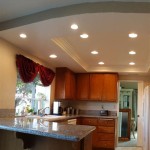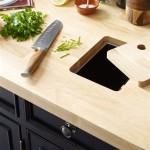Understanding Stainless Steel Kitchen Sink Grids: Protection, Functionality, and Value
Stainless steel kitchen sink grids are becoming increasingly popular accessories, and for good reason. They offer a simple yet effective solution to protect the sink basin from scratches, dents, and other forms of wear and tear. While seemingly a minor addition, a properly chosen and maintained sink grid can significantly extend the lifespan and aesthetic appeal of a kitchen sink. This article delves into the benefits, types, selection criteria, and care instructions for stainless steel kitchen sink grids.
Benefits of Using a Stainless Steel Kitchen Sink Grid
The primary function of a stainless steel sink grid is protection. It acts as a buffer between the sink's surface and the items placed within it. Without a grid, pots, pans, dishes, and utensils can easily scratch the sink's finish, especially if the sink is made of a more delicate material or has a special coating. This protective barrier is particularly beneficial for stainless steel sinks, which, despite their durability, are susceptible to scratching. Over time, these scratches can accumulate and create a dull, unsightly appearance.
Beyond protection, a sink grid also aids in functionality. By elevating items above the sink floor, the grid allows water to drain freely, preventing items from sitting in standing water. This is especially useful when washing fruits and vegetables, as it helps to remove dirt and debris more effectively. It also prevents items from becoming submerged in soapy water and potentially contaminating them. Furthermore, the grid can act as a platform for air-drying dishes, providing a designated space that keeps them off the direct sink surface and promotes faster drying.
Another noteworthy advantage is the ability of the grid to prevent food debris from directly contacting the sink's surface. This minimizes the chances of staining and makes cleaning easier. Solid food particles are less likely to become embedded in the sink's corners or crevices, reducing the need for rigorous scrubbing. This is especially relevant for sinks with textured surfaces where food can more easily become trapped.
Types and Features of Stainless Steel Kitchen Sink Grids
Stainless steel sink grids come in various shapes and sizes to accommodate different sink dimensions. The most common types are rectangular and square grids, designed for standard single and double bowl sinks. However, specialized grids are also available for corner sinks, farmhouse sinks, and other uniquely shaped sinks. It is crucial to select a grid that accurately fits the contours of the sink to ensure proper coverage and prevent slippage.
The construction of the grid is another important factor to consider. The gauge of the stainless steel wire determines the grid's strength and durability. Thicker wire gauges generally offer better support and resistance to bending or warping. The spacing between the wires is also important. Too much spacing may allow smaller items to fall through, while too little spacing may impede water flow. A balance between support and drainage is ideal.
Many sink grids feature rubber bumpers or feet on the underside to prevent them from scratching the sink's surface. These bumpers also help to dampen noise and keep the grid securely in place. Some grids are also coated with a protective layer to further enhance scratch resistance and prevent discoloration. Look for grids made of high-quality stainless steel, such as 304 stainless steel, which is known for its corrosion resistance and durability.
Additional features may include cutouts for drain placement. Ensuring the drain cutout aligns with the sink's drain is crucial for proper water drainage. Some grids also feature built-in dish drying racks or utensil holders, providing additional functionality and convenience. These features can be particularly useful for small kitchens or for those who prefer to air-dry dishes.
Selecting the Right Stainless Steel Kitchen Sink Grid
Before purchasing a stainless steel sink grid, accurate measurements of the sink's interior dimensions are essential. Measure the length, width, and depth of the sink basin, paying particular attention to any curves or irregularities. These measurements will ensure a proper fit and prevent the grid from being too large or too small.
Consider the sink material and finish when selecting a grid. While stainless steel is a common material for both sinks and grids, there are variations in stainless steel grades and finishes. Ideally, the grid should match the sink's finish as closely as possible to create a cohesive look. For example, if the sink has a brushed stainless steel finish, look for a grid with a similar finish. For sinks made of other materials, such as composite granite or copper, ensure the grid's finish complements the sink's overall aesthetic.
Evaluate the grid's construction quality by examining the thickness of the stainless steel wires, the spacing between the wires, and the quality of the welding or joining of the wires. A well-constructed grid will be sturdy and resistant to bending or warping under pressure. Check for any sharp edges or rough spots that could potentially scratch the sink or injure the user.
Read online reviews and ratings from other customers to gain insights into the grid's performance and durability. Pay attention to comments regarding the grid's fit, ease of cleaning, and resistance to rust or corrosion. Consider purchasing a grid from a reputable brand known for producing high-quality kitchen accessories.
Caring for Your Stainless Steel Kitchen Sink Grid
Regular cleaning is essential to maintain the appearance and functionality of a stainless steel sink grid. Food particles, soap scum, and mineral deposits can accumulate on the grid's surface over time, leading to discoloration and corrosion. To prevent this, rinse the grid thoroughly with water after each use to remove any loose debris.
For more thorough cleaning, use a mild dish soap and a soft brush or sponge. Avoid using abrasive cleaners or scouring pads, as these can scratch the grid's surface. Pay particular attention to the areas where the wires intersect and around the rubber bumpers, as these are common areas for debris to accumulate. Rinse the grid thoroughly with water after cleaning to remove any soap residue.
To remove stubborn stains or mineral deposits, soak the grid in a solution of vinegar and water for several hours. The acidity of the vinegar will help to dissolve the deposits and restore the grid's shine. Rinse the grid thoroughly with water after soaking.
To prevent water spots and streaks, dry the grid with a clean towel after washing. This will help to maintain its polished appearance. Avoid leaving the grid in a damp sink for extended periods, as this can promote the growth of mold and mildew.
Addressing Potential Issues: Rust and Discoloration
While stainless steel is generally resistant to rust and corrosion, certain factors can contribute to these problems. Exposure to harsh chemicals, such as bleach or acidic cleaners, can damage the protective layer on the stainless steel and make it more susceptible to rust. Similarly, prolonged contact with standing water, especially if the water is hard or contains high levels of minerals, can lead to mineral deposits and discoloration.
To prevent rust and discoloration, avoid using harsh chemicals to clean the grid. Instead, opt for mild dish soap or a vinegar solution. Ensure the grid is thoroughly rinsed and dried after cleaning to remove any residue. If rust or discoloration does occur, try using a stainless steel cleaner or polish to restore the grid's appearance. Follow the manufacturer's instructions carefully.
In some cases, rust-like stains may appear on the grid's surface due to the transfer of ferrous particles from other metal objects, such as cast iron pans. This is known as "tea staining" and is not true rust. To remove tea staining, use a stainless steel cleaner specifically designed for this purpose. Avoid using steel wool or other abrasive materials, as these can scratch the grid's surface.
If the grid is severely rusted or corroded, it may be necessary to replace it. However, with proper care and maintenance, a stainless steel sink grid can provide years of reliable service and protect the kitchen sink from damage.

5 Advantages Of Having A Sink Grid Chica Dragon

Sink Protector For Kitchen 13 X 16 Stainless Steel Bottom Grid Ebay

Serene Valley 24 17 In X 13 11 Rear Drain Heavy Duty Stainless Steel Sink Grid Ndg2413r The Home

Sinkology Wren 15 In X 27 Center Drain Powder Coated Metal Sink Grid Sg008 27mb At Lowes Com

How To Choose A Kitchen Sink Grid Riverbend Home

Vigo Silicone Kitchen Sink Protective Bottom Grid For 30 In Single Basin

5 Advantages Of Having A Sink Grid

Sink Grid Flexible

22 Inch Cast Iron High Back Deep Utility Sink Grid

Kindred Stainless Steel Bottom Grid For Kitchen Sink 13 In X 15 1 Bga1517s Rona








